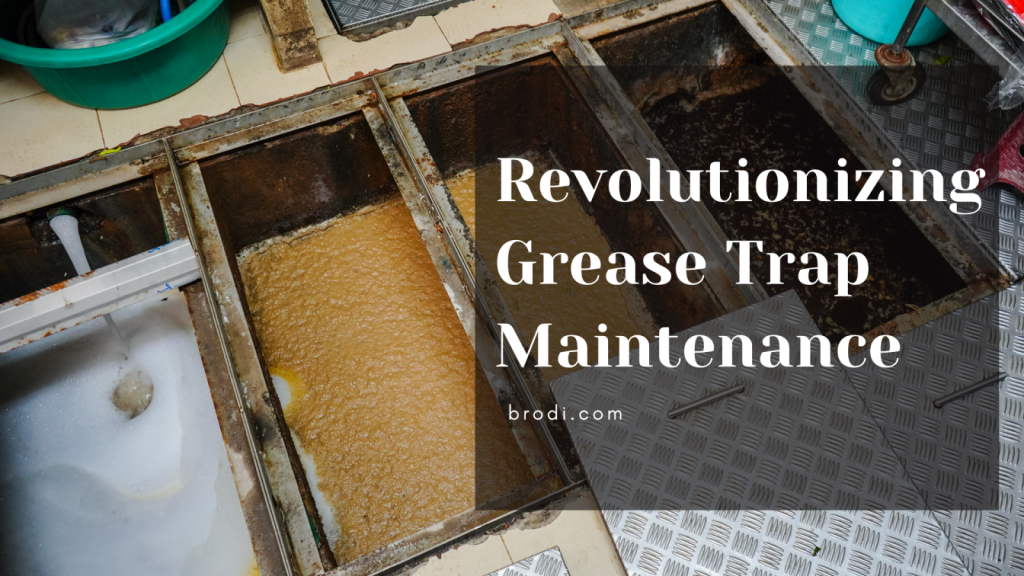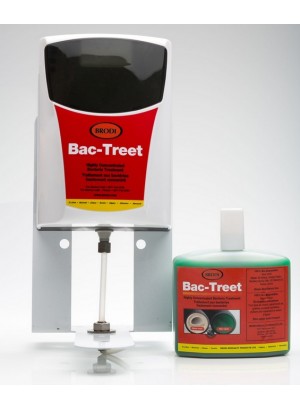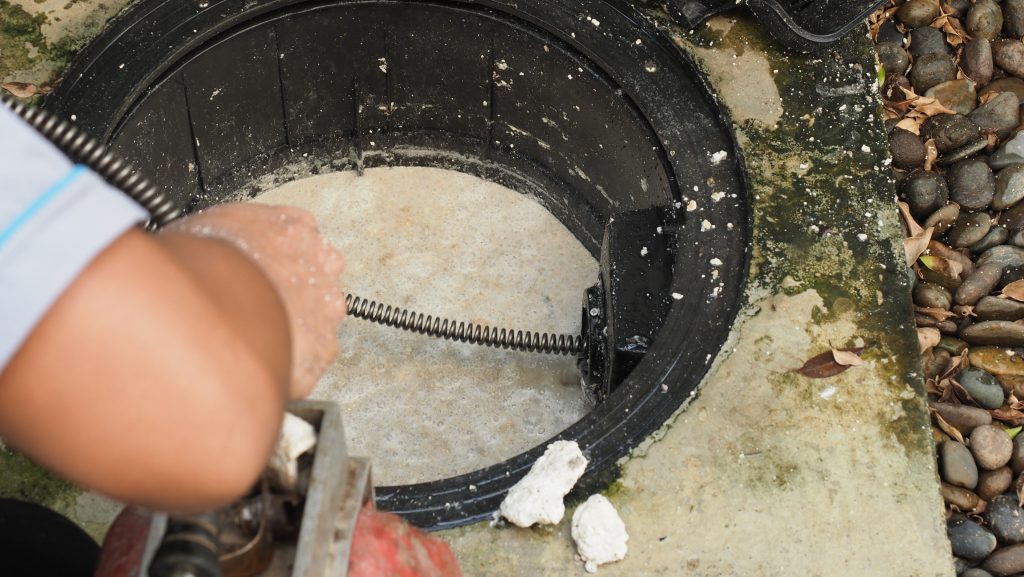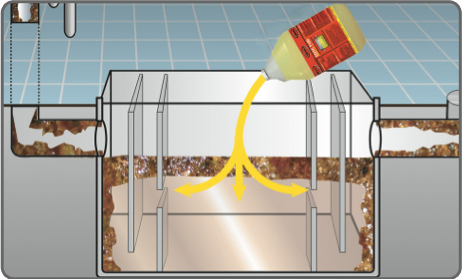Are you tired of dealing with clogged drains and foul odors caused by grease buildup in your grease trap? We have the perfect solution for you!
Introducing Bac-Treet, the revolutionary bacterial treatment specifically designed to revolutionize grease trap maintenance. With its powerful and efficient formula, Bac-Treet is set to transform the way grease traps are maintained, leaving no trace of grease buildup behind.

Unlike manual bacterial treatments, Bac-Treet utilizes a highly active blend of specially selected microbes that quickly break down fats, oils, and grease (FOG) in your grease trap. This cutting-edge technology ensures that your grease trap remains clean and odor-free, preventing costly blockages and potential health hazards.
Bac-Treet is easy to use, requiring no special equipment or training. Simply add the treatment directly into your grease trap, and let the powerful bacteria work their magic. Experience the power of ATC Bac-Treet and wave goodbye to grease trap maintenance headaches forever. Say hello to a clean and efficient grease trap with Bac-Treet. Try it today and see the difference for yourself.
Understanding The Limitations of Manual Bacterial Treatment
Maintaining a clean and efficient grease trap is essential for any establishment that deals with grease and oil on a regular basis. Grease traps are designed to capture and separate fats, oils, and grease from wastewater, preventing them from entering the sewage system and causing blockages. However, over time, grease can accumulate in the trap, leading to clogged drains, foul odors, and potential health hazards.
Proper maintenance of grease traps ensures that they function effectively, preventing costly repairs and disruptions to your business. Regularly cleaning and treating your grease trap not only extends its lifespan but also helps maintain a hygienic and odor-free environment. Neglecting grease trap maintenance can result in expensive plumbing repairs, fines from regulatory authorities, and a negative impact on your business’s reputation.
Introducing The Bac-Treet Starter Pack and Its Benefits
Traditional manual bacterial treatments have long been used to break down grease in grease traps. These treatments typically involve adding bacteria or enzymes to the grease trap, hoping that they will digest the fats, oils, and grease over time. While manual treatments can be effective to some extent, they often have limitations that can hinder their overall performance.
One of the main limitations of manual bacterial treatments is the lack of control over the types and quantities of bacteria introduced into the grease trap. Different bacteria have varying capabilities to break down grease, and using the wrong strains or insufficient quantities may result in suboptimal performance. Additionally, manual treatments may require frequent reapplications to maintain effectiveness, leading to additional costs and effort.
Another drawback of manual treatments is the time it takes for the bacteria to break down the grease. Manual treatments often require extended periods of time to fully digest the fats, oils, and grease in the trap, leaving room for potential buildup and blockages. This can lead to unpleasant odors, clogged drains, and increased maintenance requirements.
How Bac-Treet Revolutionizes Grease Trap Maintenance
Bac-Treet Starter Pack is a game-changer in grease trap maintenance. Unlike traditional manual bacterial treatments, Bac-Treet utilizes a highly active blend of specially selected microbes that are specifically designed to target and break down fats, oils, and grease in grease traps. This advanced formula ensures rapid and efficient digestion of grease, eliminating the need for prolonged treatment periods.
The key benefit of Bac-Treet is its ability to prevent grease buildup and minimize the risk of clogged drains and foul odors. By introducing powerful bacteria into the grease trap, Bac-Treet quickly breaks down even the toughest grease deposits, leaving your grease trap clean and odor-free. This not only improves the overall functionality of the grease trap but also enhances the hygiene and cleanliness of your establishment.
Another advantage of Bac-Treet is its ease of use. Unlike manual bacterial treatments that may require specialized equipment or training, Bac-Treet can be easily applied directly into the grease trap. Simply follow the instructions provided, and let the powerful bacteria do their work. This simplicity saves you time and effort, allowing you to focus on other aspects of your business.
Step-by-step Guide to Using Bac-Treet for Grease Trap Maintenance
Using Bac-Treet for grease trap maintenance is simple and straightforward. Follow these step-by-step instructions to ensure optimal results:
Installation: Open the BAC TREET device and insert the provided batteries. Securely place the unit in proximity to the grease trap or drainage area.
Feeder Hoses: Route and install feeder hoses as per directions.
Activation: Turn on the device and set the frequency required. activate the bacterial treatment. The system will release a controlled dose of bacteria into the grease trap at regular intervals.
Routine Maintenance: For optimal results, maintain a consistent treatment schedule based on the manufacturer’s recommendations. Regular use ensures continuous bacterial activity.
Monitoring: Monitor the device’s indicator lights to track battery life and bacterial treatment levels. Replace batteries as needed, and refill the bacterial solution according to the product guidelines.
Refill Process: When the bacterial solution is depleted, follow the easy refill process provided with the BAC TREET Starter Pack. This typically involves adding a new bacterial cartridge or solution container.
By following these simple steps, you can effectively maintain your grease trap and experience the full benefits of ATC Bac-Treet.
Comparing The Costs and Effectiveness of Manual Bacterial Treatment VS. Bac-Treet
When considering grease trap maintenance options, it is important to compare the costs and effectiveness of manual bacterial treatment and Bac-Treet. While manual treatments may initially seem more affordable, the long-term costs and benefits need to be taken into account.
Manual treatments often require frequent reapplications to maintain effectiveness. This can lead to additional costs in terms of purchasing bacterial products and investing time in the application process. Additionally, the extended treatment periods of manual treatments may result in increased maintenance requirements and potential business disruptions.
On the other hand, Bac-Treet offers a cost-effective and efficient solution. The powerful formula of Bac-Treet ensures rapid and thorough grease digestion, reducing the need for frequent reapplications. This saves you time, effort, and money in the long run. Furthermore, the prevention of clogged drains and foul odors through the use of Bac-Treet minimizes the risk of costly plumbing repairs and potential fines.
When considering the overall effectiveness and cost-efficiency, Bac-Treet proves to be a superior choice for grease trap maintenance.
Ready to experience the power of Bac-Treet for yourself? You can purchase Bac-Treet by clicking here




